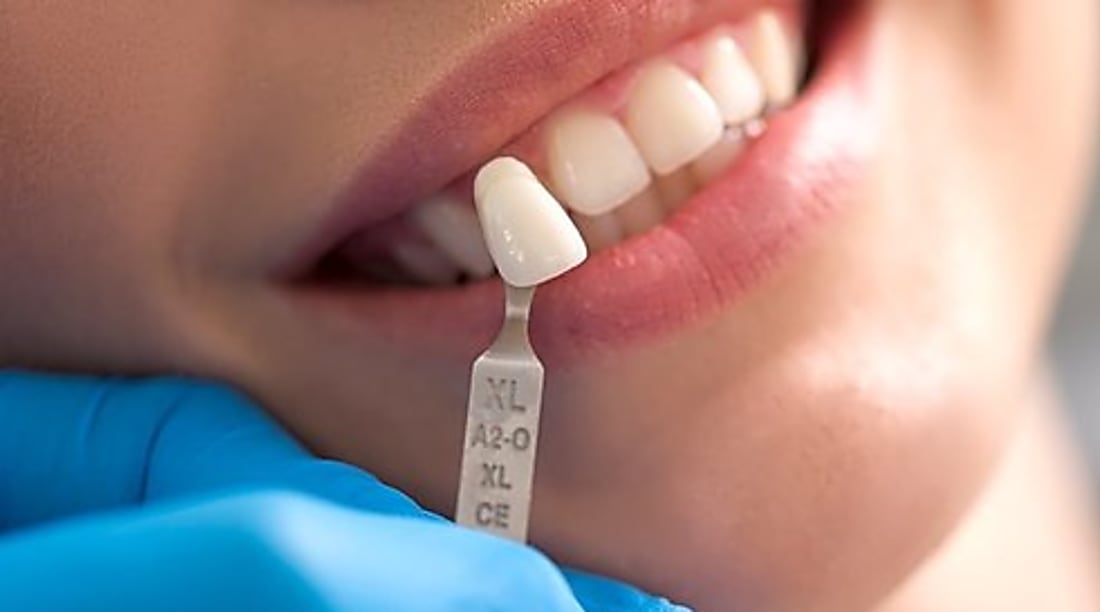Discover the Future of Dental Implants: The Screwless Revolution
Dental technology continues to evolve, and screwless dental implants are one of the latest innovations changing how tooth restoration is done. Unlike traditional implants that rely on screws to secure them in place, screwless designs offer a simpler, faster, and more comfortable experience for patients. This article explores how screwless implants work, their benefits, and why they’re becoming a preferred choice among dental professionals. Whether you’re considering dental implants or just curious about new oral care solutions, here’s what you need to know about this advanced approach to smile restoration.

Dental implants have transformed the way people approach tooth loss, offering a permanent solution that mimics natural teeth in both function and appearance. For decades, traditional screw-retained implants have been the gold standard, involving a titanium post surgically placed into the jawbone. However, recent advancements have introduced screwless dental implants, a technique that eliminates the need for screws to secure the crown to the implant post. This innovation has sparked interest among dental professionals and patients alike, promising a streamlined approach to tooth restoration.
How Screwless Dental Implants Work
Screwless dental implants operate on a fundamentally different principle compared to conventional systems. Traditional implants use a screw to attach the abutment and crown to the titanium post embedded in the jawbone. In contrast, screwless designs employ a cement-retained or friction-fit mechanism to secure the crown directly onto the implant fixture. The process begins similarly to traditional implants: a biocompatible post is surgically inserted into the jawbone, where it integrates with the bone tissue through a process called osseointegration. Once healing is complete, typically after several months, the dental crown is bonded or pressed onto the implant using dental cement or a precision-fit connection. This eliminates the access hole typically required for screw placement, resulting in a smoother crown surface and potentially improved aesthetics. The cementation process is straightforward and allows for immediate adjustments if needed, though removal for future maintenance may require more effort compared to screw-retained options.
Benefits of Screwless Implants
The screwless approach offers several potential advantages that appeal to both patients and dental practitioners. One of the primary benefits is improved aesthetics, as the absence of a screw access hole means the crown surface remains uninterrupted, which can be particularly important for front teeth where appearance matters most. Additionally, the cementation technique may allow for better control over the final positioning of the crown, enabling dentists to achieve optimal alignment and bite. Some patients report enhanced comfort, as there are no internal components that could potentially loosen over time, a concern occasionally associated with screw-retained implants. The simplified design may also reduce the overall treatment time in certain cases, as the crown can be placed more quickly once osseointegration is complete. Furthermore, the absence of mechanical components like screws may reduce the risk of technical complications such as screw loosening or fracture, though this depends on proper technique and material selection.
Comparison Between Traditional and Screwless Implants
When evaluating dental implant options, understanding the differences between traditional screw-retained and screwless cement-retained systems is essential. Traditional implants have a long track record of success, with extensive research supporting their durability and effectiveness. They offer the advantage of retrievability, meaning the crown can be easily removed by unscrewing it if adjustments or repairs are needed. However, this design requires an access hole in the crown, which must be filled with composite material that may discolor over time. Screwless implants, on the other hand, provide a seamless crown surface and may be preferred in situations where aesthetics are paramount. The trade-off is that removing a cemented crown typically requires cutting through the restoration, which can be more invasive and costly if future modifications are necessary. Both systems require adequate bone density and proper oral hygiene to ensure long-term success. The choice between the two often depends on the location of the missing tooth, patient preferences, and the dentist’s assessment of which method will provide the most reliable and aesthetically pleasing outcome. Neither approach is universally superior; each has specific applications where it excels.
Patient Experience with Screwless Implants
Patients who have undergone screwless dental implant procedures often report experiences similar to those with traditional implants, with some noting particular advantages. The initial surgical phase, which involves placing the implant post into the jawbone, is comparable regardless of the final retention method. Recovery from this stage typically takes several months as the bone heals and fuses with the implant. Once healing is complete, the crown placement appointment for screwless implants is generally straightforward and less time-consuming than some traditional methods. Many patients appreciate the smooth, natural feel of the crown without the screw access hole, which can sometimes be perceptible with the tongue. Comfort levels during and after the procedure are generally high, with most individuals experiencing minimal discomfort beyond the initial surgical phase. Long-term satisfaction often depends on factors such as proper oral hygiene, regular dental check-ups, and the skill of the dental professional performing the procedure. Some patients express concern about the permanence of cemented crowns, particularly if future adjustments might be needed, but most find the aesthetic and functional benefits outweigh this consideration. As with any dental procedure, individual experiences vary based on overall health, bone quality, and adherence to post-operative care instructions.
Choosing the Right Implant Solution
Selecting between traditional and screwless dental implants requires careful consideration of multiple factors. The location of the missing tooth plays a significant role; front teeth, where appearance is critical, may benefit more from screwless designs, while back teeth, which endure greater chewing forces, might be better suited to the proven reliability of screw-retained systems. Your dentist will evaluate your specific oral anatomy, including bone density and gum health, to determine which approach offers the best chance of long-term success. Cost considerations may also factor into the decision, though pricing can vary widely depending on geographic location, the complexity of the case, and the materials used. It is advisable to discuss all available options with a qualified dental professional who can provide personalized recommendations based on your unique circumstances. Both traditional and screwless implants have demonstrated success in restoring function and appearance, and the optimal choice depends on balancing aesthetic goals, functional requirements, and practical considerations such as future maintenance needs.
This article is for informational purposes only and should not be considered medical advice. Please consult a qualified healthcare professional for personalized guidance and treatment.
Understanding the Technology Behind Modern Implants
The evolution of dental implant technology reflects broader advances in materials science and surgical techniques. Both traditional and screwless systems rely on titanium or zirconia posts that integrate with jawbone tissue, providing a stable foundation for artificial teeth. The key difference lies in how the visible crown attaches to this foundation. Research continues to refine both approaches, with studies examining long-term success rates, patient satisfaction, and potential complications. As the field progresses, patients benefit from increasingly sophisticated options tailored to individual needs, ensuring that tooth replacement solutions continue to improve in both form and function.




